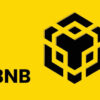
Cardano (ADA) has quickly become a prominent name in the blockchain world, known for its innovative approach to decentralized technology and its commitment to creating a more secure, scalable, and sustainable ecosystem. As Cardano continues to evolve, its roadmap and future developments are of significant interest to investors, developers, and enthusiasts alike. This article explores Cardano’s roadmap and provides predictions for its future impact on the blockchain and cryptocurrency landscape.
Cardano’s Roadmap
Cardano’s development is guided by a comprehensive roadmap, which outlines key phases and milestones for the platform’s evolution. The roadmap is structured around several distinct phases, each aimed at enhancing different aspects of the network.
- Byron (Foundation Phase)
- Launch: The Byron phase marked the initial launch of the Cardano network. During this phase, the foundational infrastructure was established, and ADA was introduced as the native cryptocurrency.
- Objectives: Key objectives included building the basic framework of the blockchain, implementing the Ouroboros Proof-of-Stake (PoS) protocol, and ensuring the network’s stability and security.
- Shelley (Decentralization Phase)
- Launch: The Shelley phase introduced decentralization to the Cardano network. This phase focused on transitioning from a federated network to a fully decentralized one.
- Objectives: Major goals included enabling staking, allowing ADA holders to participate in network validation, and incentivizing community engagement through staking rewards. The Shelley upgrade significantly improved network security and decentralization.
- Goguen (Smart Contract Phase)
- Launch: The Goguen phase brought smart contract capabilities to Cardano, enabling the development and deployment of decentralized applications (dApps).
- Objectives: The introduction of the Plutus and Marlowe frameworks facilitated smart contract creation, expanding Cardano’s functionality and allowing developers to build complex dApps on the platform.
- Basho (Scaling Phase)
- Upcoming: The Basho phase is focused on enhancing Cardano’s scalability and performance. This phase aims to optimize the network’s capacity to handle a growing number of transactions and dApps.
- Objectives: Key objectives include implementing scaling solutions such as sidechains, improving transaction throughput, and reducing latency to support a larger user base and increased network activity.
- Voltaire (Governance Phase)
- Upcoming: The Voltaire phase will introduce a decentralized governance system, allowing the Cardano community to participate in decision-making processes and network upgrades.
- Objectives: This phase will implement a voting mechanism through the Project Catalyst initiative, enabling ADA holders to propose and vote on improvements and changes to the network. The goal is to create a fully decentralized and community-driven governance model.
Predictions for Cardano’s Future
- Increased Adoption and Use Cases
- Expanding Ecosystem: As Cardano continues to develop and release new features, it is expected to attract a growing number of projects and applications. The platform’s focus on scalability, security, and usability will likely lead to increased adoption across various industries, including finance, supply chain management, and healthcare.
- DeFi and NFTs: Cardano is poised to play a significant role in the decentralized finance (DeFi) and non-fungible token (NFT) sectors. The platform’s smart contract capabilities and low transaction fees make it an attractive option for DeFi applications and NFT projects.
- Enhanced Network Performance
- Scalability Improvements: With the ongoing Basho phase, Cardano is expected to achieve significant improvements in network performance. The implementation of scaling solutions such as Hydra and sidechains will enhance transaction throughput and reduce latency, making the platform more efficient and capable of handling higher volumes of activity.
- Interoperability: Cardano’s focus on interoperability will likely lead to increased collaboration with other blockchain networks. By enabling seamless interactions between Cardano and other platforms, the network will facilitate a more interconnected blockchain ecosystem.
- Decentralized Governance
- Community Involvement: The Voltaire phase’s decentralized governance model will empower ADA holders to actively participate in the decision-making process. This democratic approach will ensure that the network evolves in line with the community’s needs and preferences, fostering greater transparency and inclusivity.
- Funding and Innovation: Through initiatives like Project Catalyst, Cardano will continue to support innovative projects and ideas within the ecosystem. The availability of funding and resources for development will drive the creation of new dApps and services, further expanding Cardano’s impact.
- Global Expansion
- Strategic Partnerships: Cardano’s ongoing partnerships with enterprises, governments, and institutions are likely to drive global adoption and integration. By establishing collaborations in diverse regions, Cardano will extend its reach and influence, contributing to the widespread use of blockchain technology.
- Educational Initiatives: Cardano’s commitment to education and outreach will play a key role in promoting blockchain awareness and adoption. Educational programs, workshops, and resources will help users and developers understand and engage with Cardano’s technology.
Conclusion
Cardano’s roadmap and future predictions highlight a promising trajectory for the platform. With its focus on scalability, decentralization, and smart contract functionality, Cardano is well-positioned to make a significant impact on the blockchain and cryptocurrency space. As the platform progresses through its development phases and continues to innovate, it is expected to attract more users, projects, and applications, solidifying its role as a leading force in the decentralized technology landscape.










